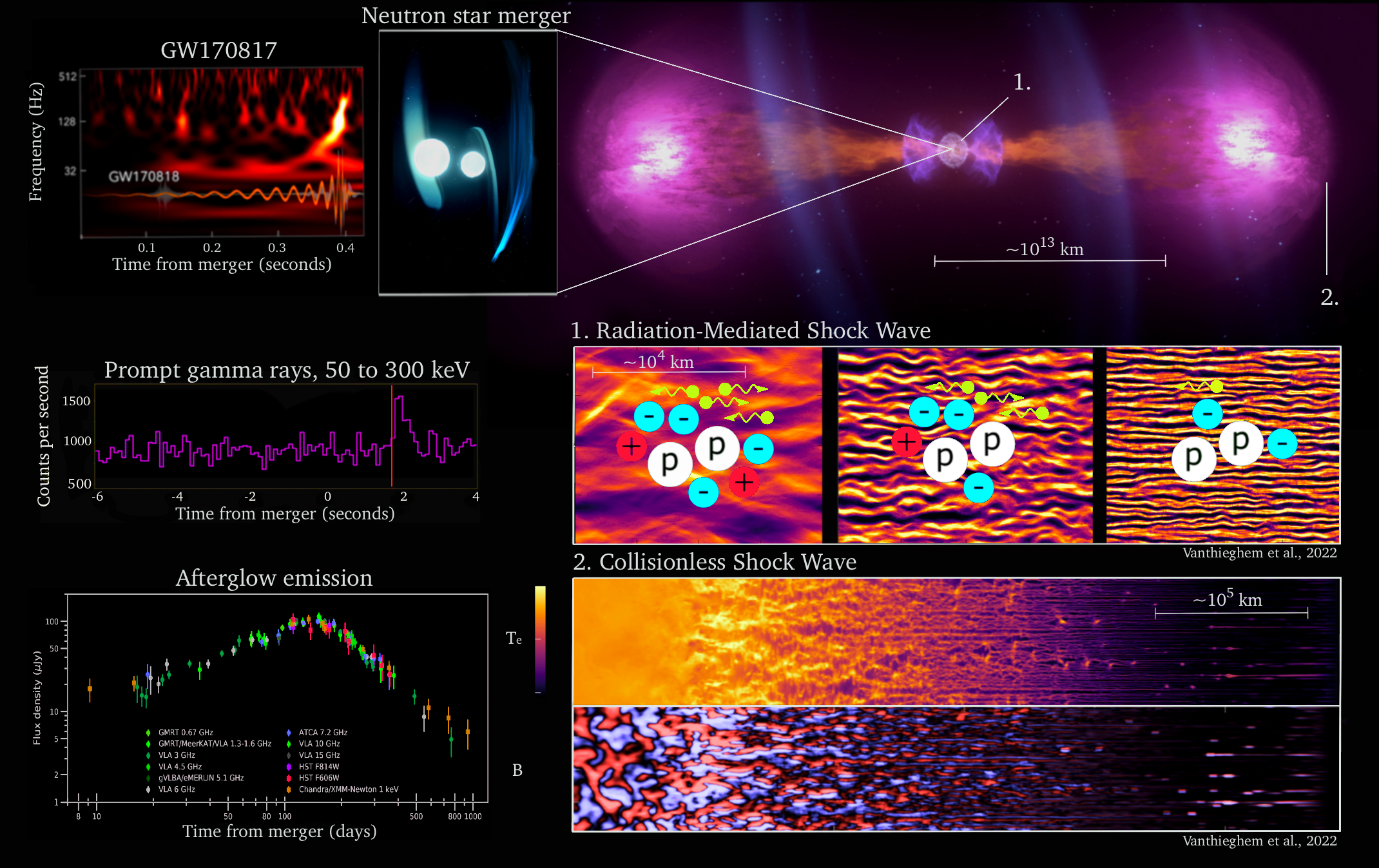Dr. Vanthieghem works at the intersection of theoretical and computational plasma physics, multimessenger astrophysics, and laboratory astrophysics. He develops first-principles kinetic plasma models of extreme astrophysical phenomena and validates them with high-performance particle-in-cell (PIC) numerical simulations. In a short time span, he has made major contributions to the physics of shock waves, whether collisionless, relativistic or non-relativistic, weakly or strongly magnetized, or even radiation-mediated, and thus advanced significantly our understanding of the plasma processes at work in these extreme sources.
In a series of remarkable publications, he has developed a novel and advanced theoretical description of plasma heating and electron-ion energy partition in the transition layer of weakly magnetized collisionless shocks and validated it with PIC simulations. This problem, until now a major theoretical unknown, is of fundamental importance for the interpretation of observed emissions from shock-heated electrons in astrophysical sources, from supernova remnants to relativistic astrophysical jets.
Building on these achievements, Dr. Vanthieghem has been able to advance the complex kinetic physics of radiation-mediated shock waves, which propagate in dense environments and generate the first radiative signals of explosive astrophysical transients, including gravitational wave events associated with coalescing neutron stars and gamma-ray bursts. In particular, through advanced theoretical and numerical modelling, he has characterized new channels of energy dissipation, opening up exciting possibilities for complementary sources of precursor radiation from these events.
More recently, he has carried out the world’s first kinetic numerical simulations of relativistic magnetized shock waves forming in the magnetospheres of magnetars and provided a compelling theoretical model of their structure, thereby opening a new window on the processes thought to be at the origin of the enigmatic “fast radio burst” sources.
His research is unique in its skillful combination of theoretical, semi-analytical and numerical methods, and his early achievements have made him a world-renowned expert in the modeling of shock waves and extreme plasma astrophysics.



